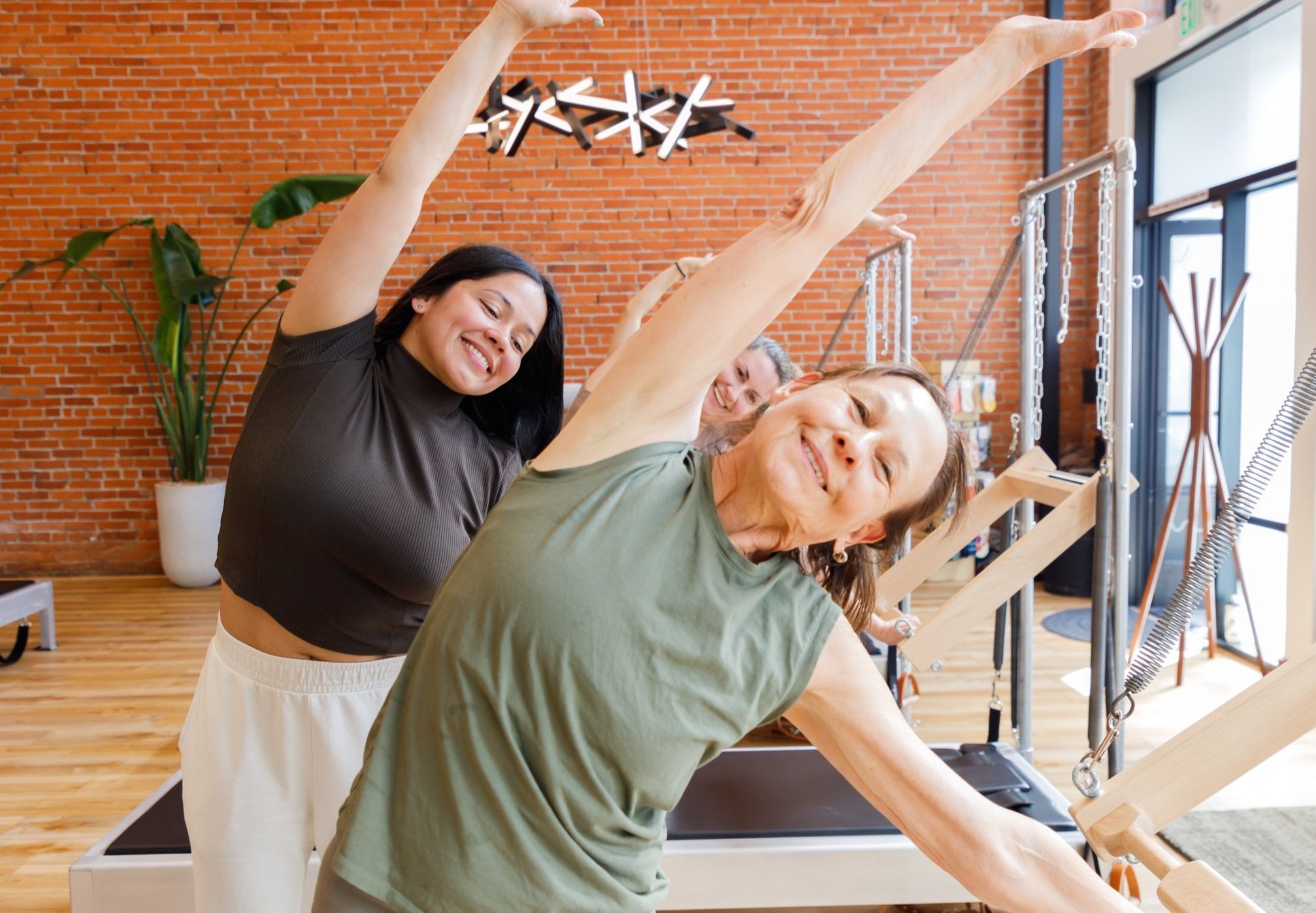Pilates and Nervous System Regulation
I’ve been running a Pilates studio for almost six years now, and if there’s one thing I’ve consistently noticed—it’s how people walk in vs. how they walk out.
Some come in frazzled. Shoulders tense. Sometimes, even holding their breath.
You can feel the energy—they’ve been rushing all day, doing all the things, running on autopilot.
And then... something shifts.
After their Pilates session, their faces are softer.
Their posture is different.
They move slower, more intentionally.
They’ve returned to themselves.
That’s what Pilates does.
It brings you back to your body. Back to presence.
Over the years, I’ve come to understand this through a deeper lens:
Pilates is a somatic practice—a powerful tool that can shift your nervous system from stress and anxiety to calm and ease.
Here’s why 👇🏾
1. Breath: The Gateway to Safety
In Pilates, everything begins with the breath.
We inhale to prepare.
We exhale to move.
Each breath is purposeful—and it’s powerful.
When you breathe deeply and intentionally, your body shifts into the parasympathetic state—the place where healing, rest, and calm can happen.
This is the opposite of the stress response so many of us live in day to day.
2. Movement That Elevates Mood
Pilates gets your blood circulating.
Your joints mobilized.
Your core engaged.
But beyond the physical strength and mobility, there’s something else happening:
You enter a flow state.
That sweet spot where your mind and body move together, moment by moment.
You’re not overthinking.
You’re not rushing.
You’re just… in it. Fully immersed.
This kind of movement naturally supports mood, clarity, and emotional regulation.
3. Presence Is a Gift You Give Yourself
In a world that constantly pulls you in a hundred directions, there’s something deeply nourishing about choosing presence. It’s an hour, that’s just for you.
Uninterrupted. Intentional. A space where your focus shifts inward—toward your breath, your alignment, your body in motion.
No phones. No inbox.
This kind of presence is more than focus—it’s a form of nervous system regulation. Because the moment you drop into your body, you step out of survival mode.
You stop chasing and start receiving.
You stop rushing and start feeling.
4. Pilates Opens the Heart—Literally and Energetically
Think about how we celebrate:
Arms in the air.
Chest lifted.
Heart open to the sky.
Now think about how we collapse into stress: shoulders rounded, head down, heart tucked in.
The body speaks before we do. One of the most beautiful things about Pilates is how intelligently it opens the front of the body—especially the chest.
We work so often at desks, on phones, or in protective postures that our shoulders curl forward and our heart space begins to close.
But then you come to class. You move through Swan, Double Leg Kick, or Breast Stroke.
Your heart opens.
Your shoulders draw back.
Your breath deepens.
These aren’t just physical shapes—they’re invitations.
To release.
To expand.
To open.
So if you’ve been feeling anxious, overwhelmed, or disconnected, and if your workouts leave you feeling more depleted than restored…
I invite you to get curious about Pilates.
It might be the practice your nervous system has been asking for all along.
- By: Angelique Velazquez

